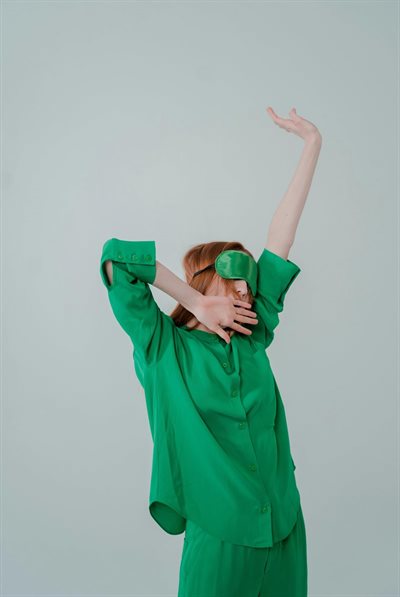
Eat, breathe, sleep: Dr Steven Olmos on the significance of sleep

As an internationally recognised authority in TMJ and sleep-disordered breathing, Dr Steven Olmos knows a thing or two about the importance of sleep.
Olmos visited South Africa to attend the launch of the new centre recently.
“Our mission is to bridge medicine and dentistry, providing patients with solutions that restore function, comfort, and quality sleep,” says Olmos.
“This new centre will bring world-class care to South Africans who have long sought effective relief from chronic pain and sleep issues.”
He spoke to us about the importance of sleep, trends in sleep treatment, and what’s next for the TMJ & Sleep Therapy Centre South Africa.
Why is sleep so crucial in achieving overall good health and well-being?
Sleep plays a vital role in both physical and mental health. According to a recent review, adults who don’t get sufficient high-quality sleep (typically 7-9 hours for ages 18-64) face higher risks of cardiovascular disease, diabetes, obesity, weakened immune function, worse cognitive performance, impaired quality of life and even increased accident risk.
In short, good sleep supports recovery, hormone regulation, brain function (learning, memory, mood) and physical repair; poor sleep undermines all those systems.
What’s unique about the TMJ & Sleep Therapy Centre South Africa?
We specialise in the intersection of jaw/joint issues (TMJ/TMD) and sleep-related breathing disorders — recognising how jaw/joint dysfunction, airway problems and sleep issues often co-exist.
We emphasise a non-surgical, non-invasive and holistic approach: diagnosing root causes (jaw function, airway, craniofacial pain) rather than just treating symptoms.
We use advanced diagnostics, customised plans for both adults and children (including airway development work for kids) in our Johannesburg centre.
So, what’s unique is the combined focus on TMJ, craniofacial pain and sleep-breathing disorders under one roof, with non-invasive methods.
What are some of the treatments on offer at the centre?
Some of the key offerings include:
- Custom oral appliances/splints to treat TMJ disorders and to advance the jaw/airway in sleep-breathing disorders.
- Physical therapy/exercises for jaw muscle function, posture and mobility.
- Lifestyle modifications: stress management, breathing habit correction, diet/position changes, especially for airway health.
- Paediatric airway development interventions: myofunctional therapy, orthodontic guidance, early intervention for mouth-breathing and airway constriction.
- Advanced diagnostics using state-of-the-art technology to evaluate TMJ function and sleep-related breathing disorders.
In sum, a multidisciplinary toolkit addressing joint/pain, airway/sleep and developmental/children’s issues.
More and more people are using wearable tech to measure their health. How reliable, do you think, are wearable sleep trackers?
Wearable sleep trackers certainly have their place, but they have limitations and need to be used with the right expectations:
- Strengths: They do fairly well at detecting overall sleep vs wake, and can track broad trends over time. For example, a validation study found that a wearable device had low bias (~13.8 minutes) for sleep duration in healthy adults.
- Limitations: When it comes to detecting detailed sleep stages (light, deep, REM) or diagnosing sleep disorders, they are less reliable. A 2023 multicentre study found substantial variation among 11 consumer sleep trackers when compared to polysomnography (the gold standard).
Another review pointed out that devices using only accelerometers are good for sleep/wake detection, but much weaker for sleep staging unless they include additional sensors (e.g., photoplethysmography) and well-validated algorithms.
My judgement: They are useful for self-monitoring trends (e.g., “sleep duration seems down this week”), but you should not rely on them for precise clinical diagnosis.
If you have suspected sleep-disordered breathing, TMJ/airway issues or significant daytime fatigue, you still need a professional assessment.
What are some of the other trends in sleep treatment right now?
Current trends include:
- Increased use of digital/behavioural interventions, especially for insomnia: e.g., cognitive-behavioural therapy for insomnia (CBT-I) is becoming more mainstream.
- Use of AI and machine learning to personalise sleep-medicine approaches and analyse large data sets (from wearables, home monitoring) to catch disorders earlier.
- The development of novel diagnostic/monitoring devices beyond wearables: e.g., smart garments, textile sensors, in-ear electrodes to monitor sleep/airway at home.
- Emphasis on airway-oriented treatments for sleep-disordered breathing: not just CPAP, but oral appliances, airway/dentofacial development therapies, lifestyle/weight-loss approaches.
- Growing attention to sleep regularity and circadian factors (bedtime consistency, timing of sleep), not just sleep duration.
So, sleep medicine is shifting from purely “how many hours” to “how regular, how good quality, how much breathing/airflow” and from one-size-fits-all to personalised approaches.
What’s to come for the TMJ & Sleep Therapy Centre in South Africa?
Expanding airway development/children’s services, given our paediatric airway work.
Greater integration of sleep-breathing diagnostics, especially in the South African market, where awareness of sleep disorders is growing (as indicated by the increased claims for sleep disorders in local medical-scheme data).
Potential for digital monitoring and home-based assessments (in line with global trends) that might supplement our clinic-based diagnostics.
Possibly expanding our network or opening more centres in South Africa to enhance access.
Incorporating ongoing research and training of practitioners in the region through the global umbrella (TMJ & Sleep Therapy Centres International), which emphasises the “Olmos System” of scientifically-based treatment.
The TMJ & Sleep Therapy Centre South Africa can be found at 15 Osborn Rd in Houghton Estate, Johannesburg.
About Maroefah Smith
View my profile and articles...